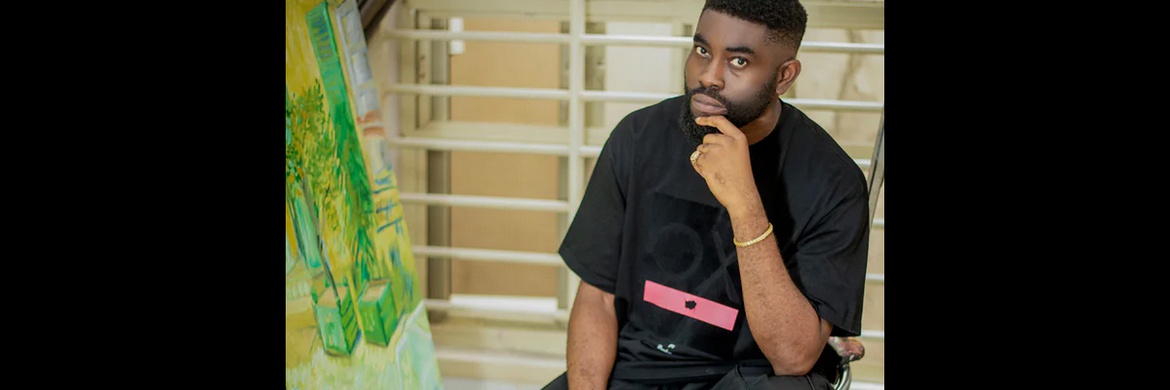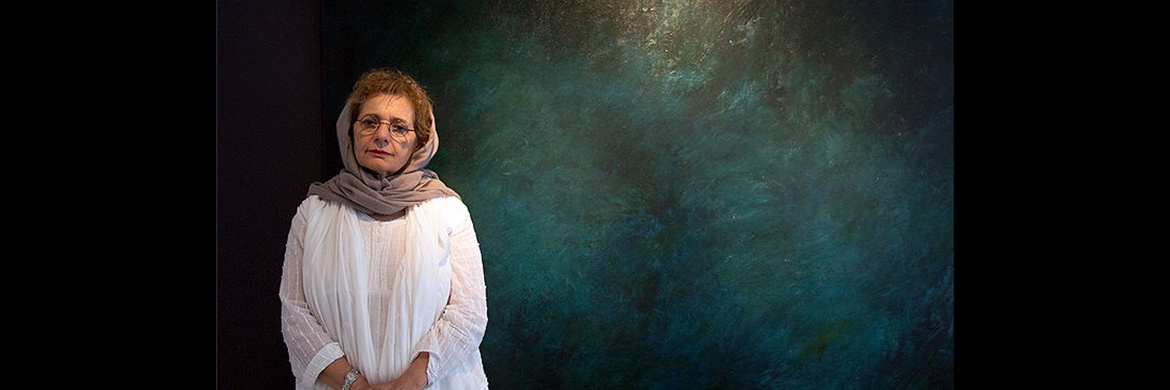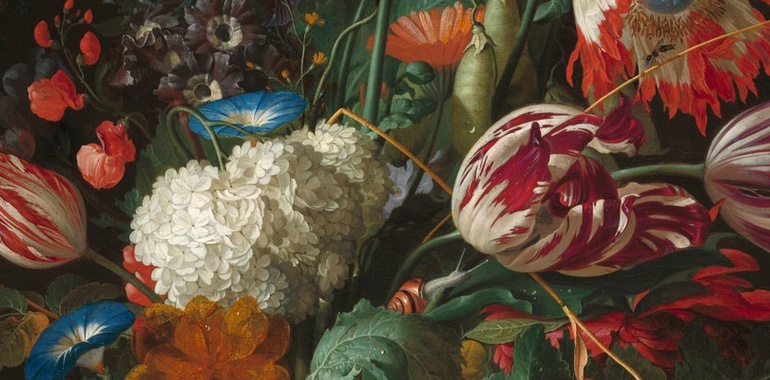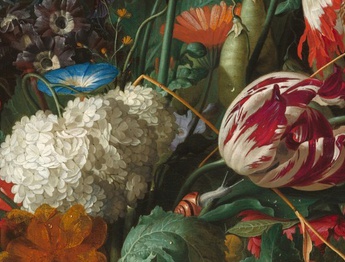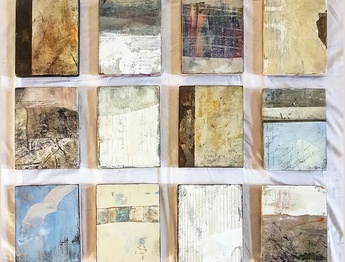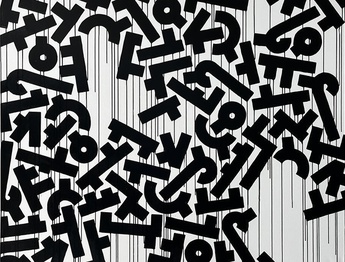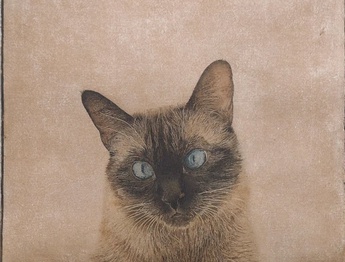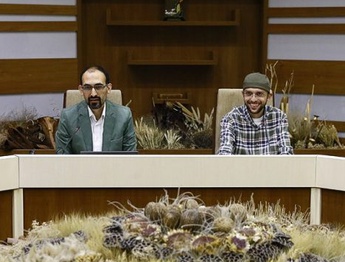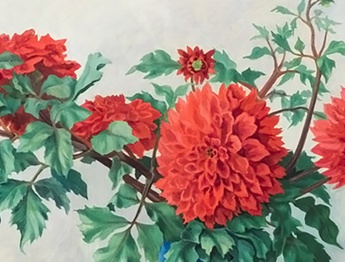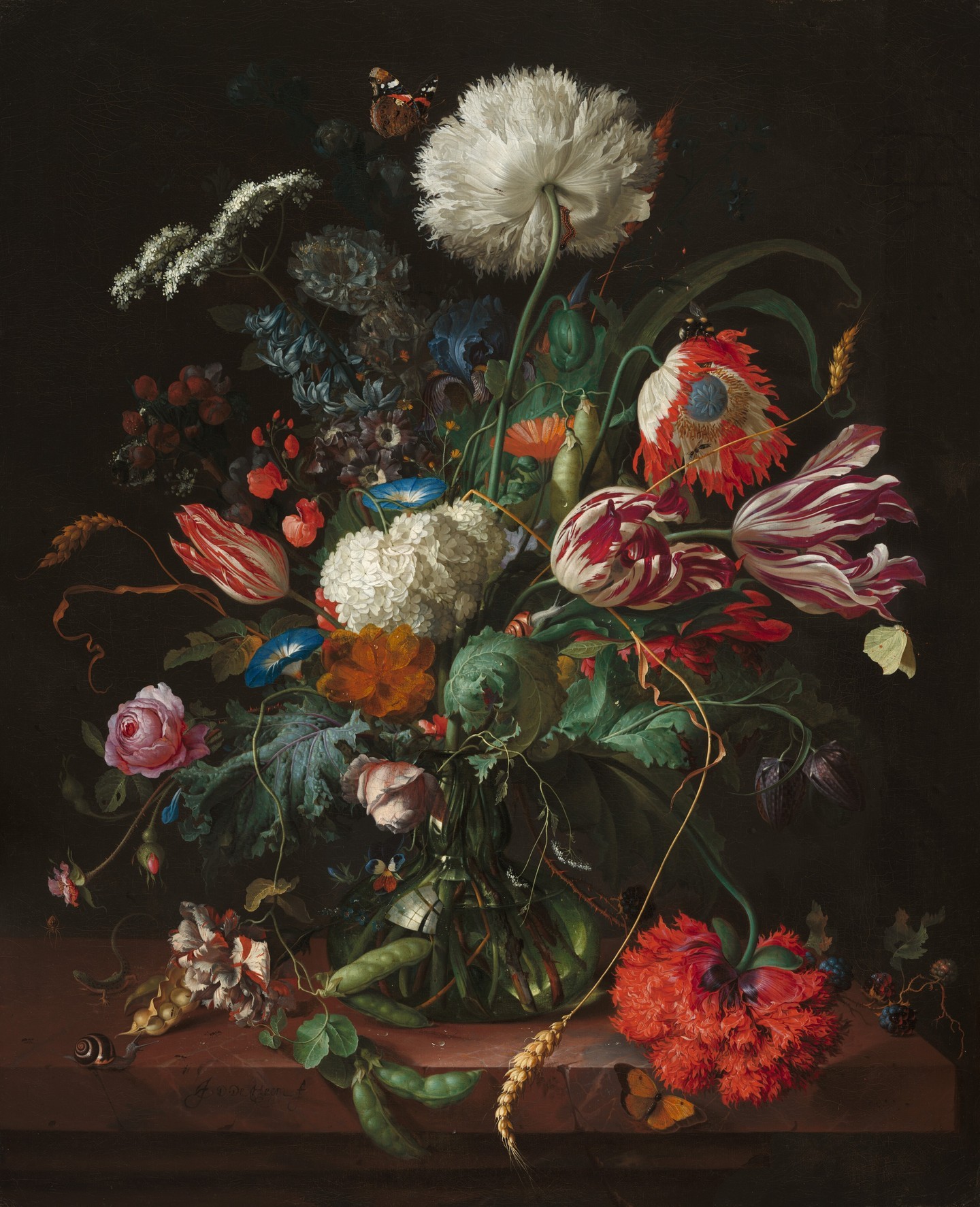
Jan Davidsz de Heem/ Vase of Flowers/ 1660
The Dutch and Flemish took extraordinary delight in depictions of the natural world as an expression of God’s everlasting blessing. The flower paintings of Jan Davidsz de Heem celebrate the beauty of flora while at the same time exemplifying the concept of Ars longa, vita brevis (art is long, life is short) embodied in the Dutch still-life paintings of the seventeenth century. De Heem’s paintings also reflected the great interest in botany at that time, and this work includes exotic flowers and plants brought back from faraway places, such as the tulip, originally imported into Europe from Turkey in the 1550s.
De Heem was one of the most gifted, versatile, and influential still-life artists of his age. His refined technique allowed him to portray a great variety of textures that captured the very essence of the objects, including the petals of exotic flowers; long bent reeds of wheat; minute creatures such as butterflies, ants, snails, and caterpillars; and finally, the reflective surfaces of glass. In this work, De Heem creates a harmonious arrangement by balancing the colors and shapes of thirty-one types of flowers, vegetables, and grains. Despite the illusion of reality, this bouquet could have never actually existed, as the various flowers would have bloomed in different seasons. De Heem often included specific animals and flowers in his work for their symbolic meanings. Representing darkness and decay, a salamander stares hungrily at a spider, while a snail, a moth, and some ants crawl on the marble shelf. The memento mori (rememeber that you will die) images are counterbalanced by the wheat stalks symbolizing the Eucharist, and by the caterpillar and butterfly on the white poppy, which evoke redemption and resurrection.
